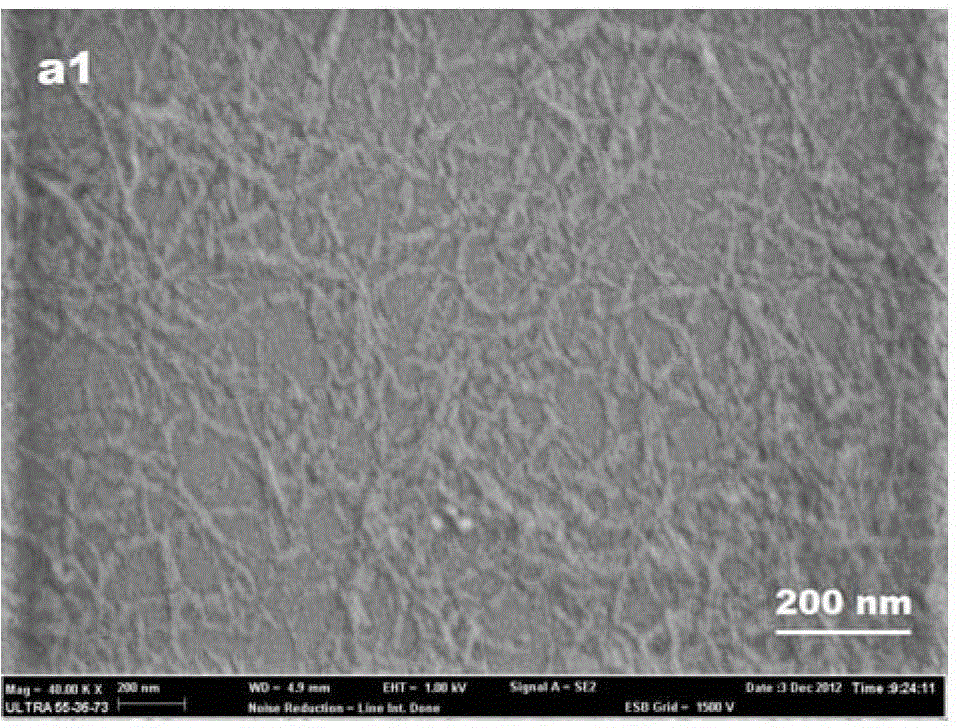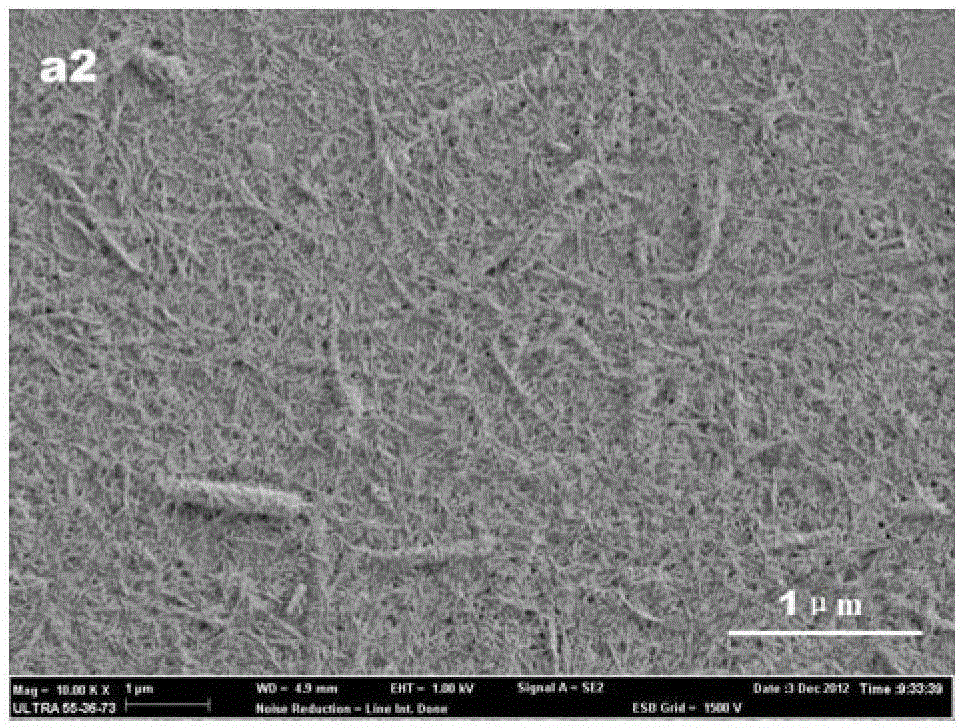Method for preparing nano microcrystalline cellulose by hydrolyzing phyllostachys edulis fiber with cellulase
A technology of cellulase and moso bamboo fiber, which is applied in the field of pulp and papermaking engineering, can solve the problems of high price, long growth cycle, insufficient supply of fiber raw materials, etc., and achieve the alleviation of environmental pollution, expansion of the range of raw materials, and important economic and social benefits Effect
- Summary
- Abstract
- Description
- Claims
- Application Information
AI Technical Summary
Problems solved by technology
Method used
Image
Examples
Embodiment 1
[0021] 1) Deleafing, washing, and drying the moso bamboo, crushing it with a plant grinder, and filtering it through a 60-mesh sieve to obtain moso bamboo powder with a particle size less than or equal to 0.25 mm;
[0022] 2) The moso bamboo powder obtained in step 1) was reacted in 8.0wt% KOH solution at 85°C for 120min under mechanical stirring, the mass ratio of moso bamboo powder to KOH solution was 1:15, repeated twice, and washed with distilled water Net residual alkali, obtain moso bamboo fiber;
[0023] 3) Using 5.0wt% NaClO solution under the action of mechanical stirring, the bamboo fiber obtained in step 2) was bleached at 70°C for 90 minutes. The mass ratio of moso bamboo fiber to NaClO solution was 1:10, repeated 4 times, and washed with distilled water Residual chlorine to obtain high-purity moso bamboo fiber;
[0024] 4) The high-purity moso bamboo fiber obtained in step 3) was placed in a solution of extracellular cellulase produced by Trichoderma reesei at pH...
Embodiment 2
[0027] 1) Deleafing, washing, and drying the moso bamboo, crushing it with a plant grinder, and filtering it through a 60-mesh sieve to obtain moso bamboo powder with a particle size less than or equal to 0.25 mm;
[0028] 2) React the moso bamboo powder obtained in step 1) in a 7.0wt% KOH solution at 90°C for 150 minutes under mechanical stirring, the mass ratio of the moso bamboo powder to the KOH solution is 1:12, repeat twice, and wash with distilled water Net residual alkali, obtain moso bamboo fiber;
[0029] 3) Using 4.0wt% NaClO solution under the action of mechanical stirring, the moso bamboo fibers obtained in step 2) were bleached at 80°C for 120 minutes, the mass ratio of moso bamboo fibers to NaClO solution was 1:8, repeated 4 times, and washed with distilled water Residual chlorine to obtain high-purity moso bamboo fiber;
[0030]4) The high-purity moso bamboo fiber obtained in step 3) was placed in a solution of extracellular cellulase produced by Trichoderma r...
Embodiment 3
[0033] 1) Deleafing, washing, and drying the moso bamboo, crushing it with a plant grinder, and filtering it through a 60-mesh sieve to obtain moso bamboo powder with a particle size less than or equal to 0.25 mm;
[0034] 2) React the moso bamboo powder obtained in step 1) in a 6.0wt% KOH solution at 95°C for 180 min under mechanical stirring, the mass ratio of moso bamboo powder to KOH solution is 1:10, repeat twice, and wash with distilled water Net residual alkali, obtain moso bamboo fiber;
[0035] 3) Using 3.0wt% NaClO solution under the action of mechanical stirring, the bamboo fiber obtained in step 2) was bleached at 90°C for 150 minutes. The mass ratio of moso bamboo fiber to NaClO solution was 1:5, repeated 4 times, and washed with distilled water Residual chlorine to obtain high-purity moso bamboo fiber;
[0036] 4) The high-purity moso bamboo fiber obtained in step 3) was placed in a solution of extracellular cellulase produced by Trichoderma reesei at pH 3, 70°C...
PUM
| Property | Measurement | Unit |
|---|---|---|
| particle diameter | aaaaa | aaaaa |
Abstract
Description
Claims
Application Information
 Login to View More
Login to View More - R&D
- Intellectual Property
- Life Sciences
- Materials
- Tech Scout
- Unparalleled Data Quality
- Higher Quality Content
- 60% Fewer Hallucinations
Browse by: Latest US Patents, China's latest patents, Technical Efficacy Thesaurus, Application Domain, Technology Topic, Popular Technical Reports.
© 2025 PatSnap. All rights reserved.Legal|Privacy policy|Modern Slavery Act Transparency Statement|Sitemap|About US| Contact US: help@patsnap.com


